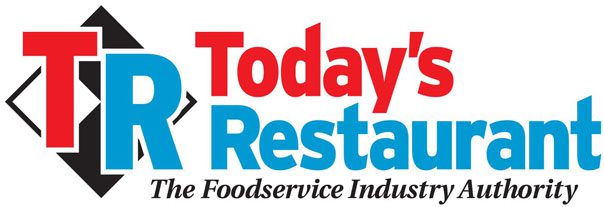
7 Tips to Help Restaurants Navigate a Trifecta of Challenges
By
Dallas Henderson
Rize Point
Amid the fallout of the COVID-19 pandemic, restaurants are facing three major challenges:
- Tremendous price hikes – Some food and beverage supplies are 20% more costly than they were pre-pandemic, and inflation hit a 41-year high in March 2022.
- An ongoing staffing shortage – An estimated 3% of the American workforce quit their jobs in late 2021, but that number was double in the hospitality industry.
- Continued supply chain disruption – In fact, 96% of restaurant operators say they have recently encountered product delays or shortages.
This trifecta of challenges has created a perfect storm for restaurants, who are still reeling from two hard years due to the pandemic. How can they survive and thrive in an environment that is still throwing them curveballs? Here are some tips:
- Use tech tools to boost safety and quality. Restaurant operators and managers may be short-staffed, but they can’t cut corners on food safety. When teams are stretched too thin, they may compromise safety and quality by skipping line checks, washing hands less frequently, not consistently checking food temperatures, or being careless when handling food allergens. One error can destroy a brand’s reputation, so rely on tech tools to help minimize risks and ensure safety procedures are properly conducted, monitored, and enforced. Tech tools can also help make essential tasks – like line checks and inventory – much easier, quicker, and more accurate.
- Make small changes. At a time when every dollar counts, restaurants should use resources wisely. Remember that even small changes – and small savings – will add up over time. For instance, shut down one piece of kitchen equipment for 30 minutes a day to save your restaurant $100 a year. Use reusable napkins, towels, cups, dishes, and silverware instead of disposable. Incentivize guests to bring their own reusable containers for takeout orders.
- Reduce food waste. In the US, restaurants waste an estimated 22 to 33 billion pounds – totaling a whopping $162 annually. So many restaurants have struggled – and even closed – due to pandemic-related hardships, but our industry’s food wastage means restaurants are literally throwing money away. It doesn’t have to be this way. Make waste reduction a part of your company culture and implement steps to reduce or eliminate waste. The price of basic food items – from proteins to cream cheese – have increased significantly since before the pandemic, rising 3.4% on an annual basis in 2020, and 3.9% in 2021 – much higher than 2019’s 1.9% rise, according to the Consumer Price Index (CPI). Encourage your kitchen staff to use every bit of food. Stale bread can become croutons or breadcrumbs, wilted herbs can become pesto, and past-its-prime fruit can become purees or sauces. Repurpose leftovers or excess food into new dishes. Be creative and resourceful, especially as certain ingredients remain difficult (or expensive) to get.
- Adjust menus. Inflation and supply chain disruptions mean that restaurants must be more thoughtful about what they serve. Instead of offering a massive menu full of many choices, downsize to only feature your best-selling items. By focusing on fewer menu items, your team can streamline your purchases, buying fewer ingredients for less waste and reduced expense. Have your chefs plan menu items and daily specials around ingredients that are readily available, in season, and (ideally) local.
- Plan better. Poor planning is a huge contributor to the excessive waste problem. Therefore, look at data to make more informed purchasing decisions so you’re not buying more than you can reasonably use. Take more accurate inventory so you don’t make redundant purchases. Consider historical sales patterns to see how much inventory you actually use in a certain timeframe. Today’s tech systems allow brands to view sales patterns, track inventory, manage production, avoid overstocking, and determine areas of wastage.
- Focus on staff retention. Almost half of restaurant operators said recruitment and retention are their top challenges this year. Therefore, restaurants should do everything in their power to retain existing employees during this challenging climate. Paying competitive rates may seem unfeasible right now, with the soaring inflation, but good compensation is critical to keeping staff members happy – especially if they’re taking on extra shifts and/or responsibilities because you’re short-staffed. In addition to paying employees well, tell them (repeatedly) how much you appreciate them and how they’re contributing significantly to your restaurant’s success. Offer referral bonuses to employees who refer friends that are hired. And create a cool, fun company culture where it’s a pleasure – not a chore – to come to work.
- Use digital systems to better manage costs. While it may seem counterintuitive to spend money on tech tools during this challenging operating environment, today’s technologies can help restaurants reduce costs and more effectively manage operations. An initial tech spend will have a huge ROI in terms of transparency, insights, and data. This information will result in cost-savings from optimized scheduling, reduced labor costs, more informed purchasing decisions, and more.
The restaurant industry is, once again, showing its resilience, despite facing challenge after challenge since 2020. The good news is that things are (hopefully) going to improve in 2022. The National Restaurant Association predicts that restaurant sales will reach $898 billion this year – up from $864 billion in 2019 – due to rising consumer demand. Use these tips to help navigate today’s challenges and know that better days are ahead.
Read more great articles about the restaurant industry at www.trnusa.com
About the Author
Dallas Henderson, a 25-year veteran of the service industry, is an Account Manager at RizePoint. RizePoint is disrupting traditional market software with their innovative, new product platform Ignite™ Supplier Certification Management, which helps small to medium sized businesses simplify the supplier certification and maintenance process.
dallas.henderson@rizepoint.com.





Recent Comments